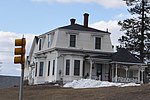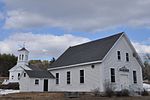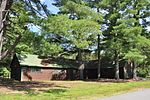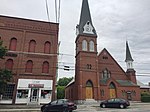Little Suncook River
New Hampshire river stubsRivers of Merrimack County, New HampshireRivers of New HampshireTributaries of the Merrimack River

The Little Suncook River is a 4.0-mile-long (6.4 km) river in central New Hampshire in the United States. It is a tributary of the Suncook River, part of the Merrimack River (and therefore Gulf of Maine) watershed. The Little Suncook begins at the outlet of Northwood Lake in the town of Epsom. Flowing west, it passes through Bixby Pond (also known as Cass Pond), passes the villages of Epsom and Gossville, and joins the Suncook River near the Epsom Traffic Circle. U.S. Route 4 parallels the Little Suncook for the river's entire length.
Excerpt from the Wikipedia article Little Suncook River (License: CC BY-SA 3.0, Authors, Images).Little Suncook River
Old Railroad Grade,
Geographical coordinates (GPS) Address Nearby Places Show on map
Geographical coordinates (GPS)
| Latitude | Longitude |
|---|---|
| N 43.223611111111 ° | E -71.355277777778 ° |
Address
Old Railroad Grade
Old Railroad Grade
03234
New Hampshire, United States
Open on Google Maps









